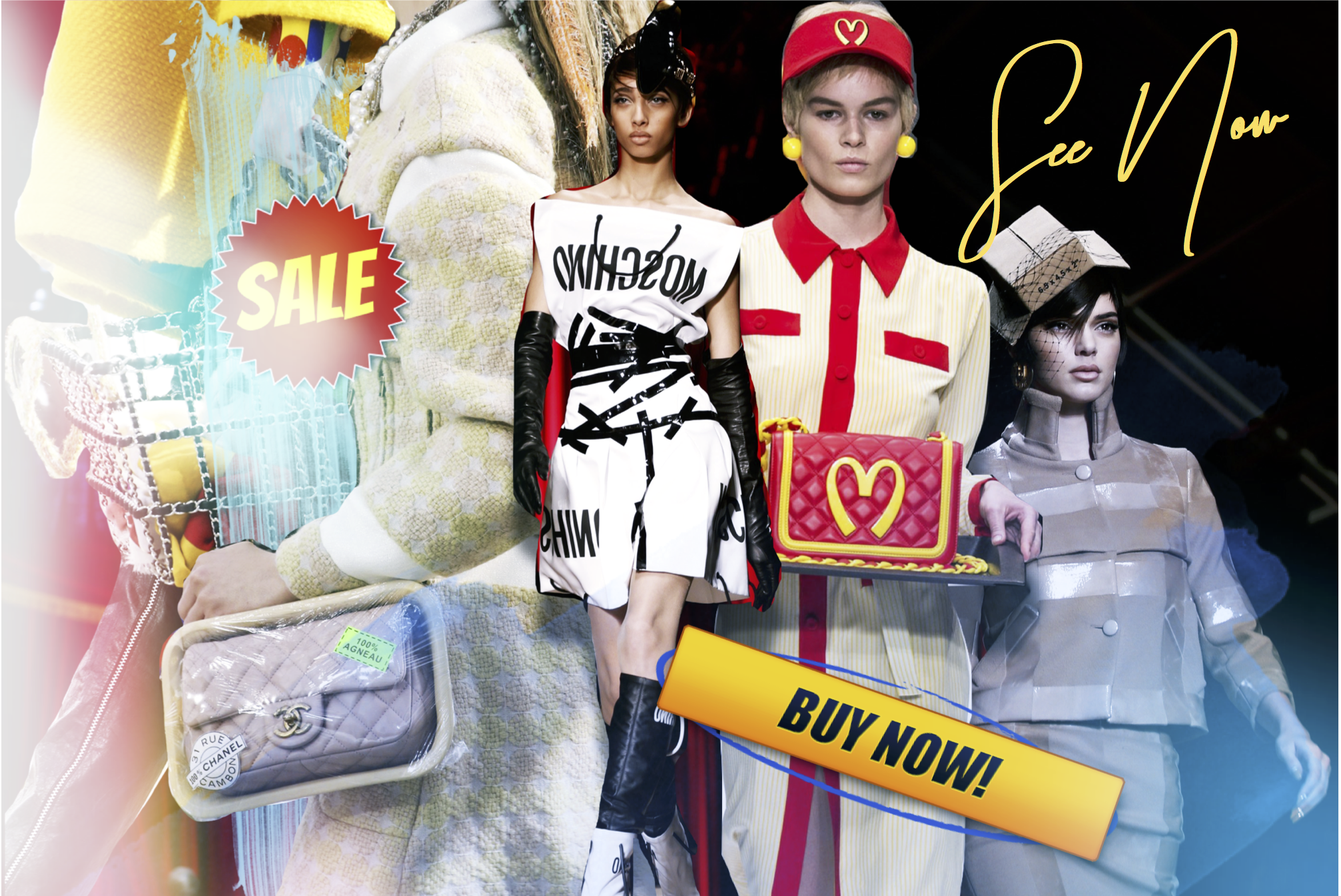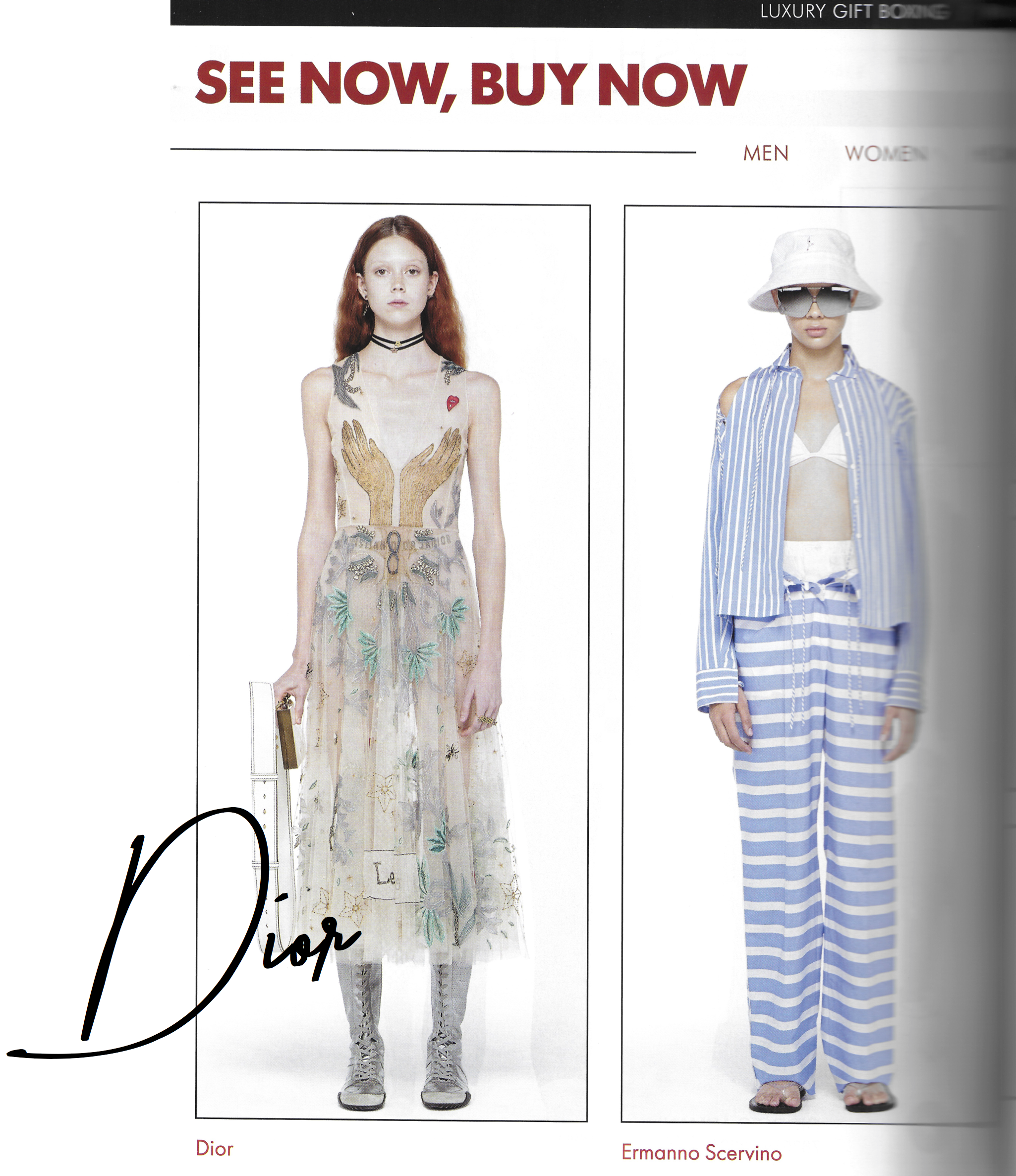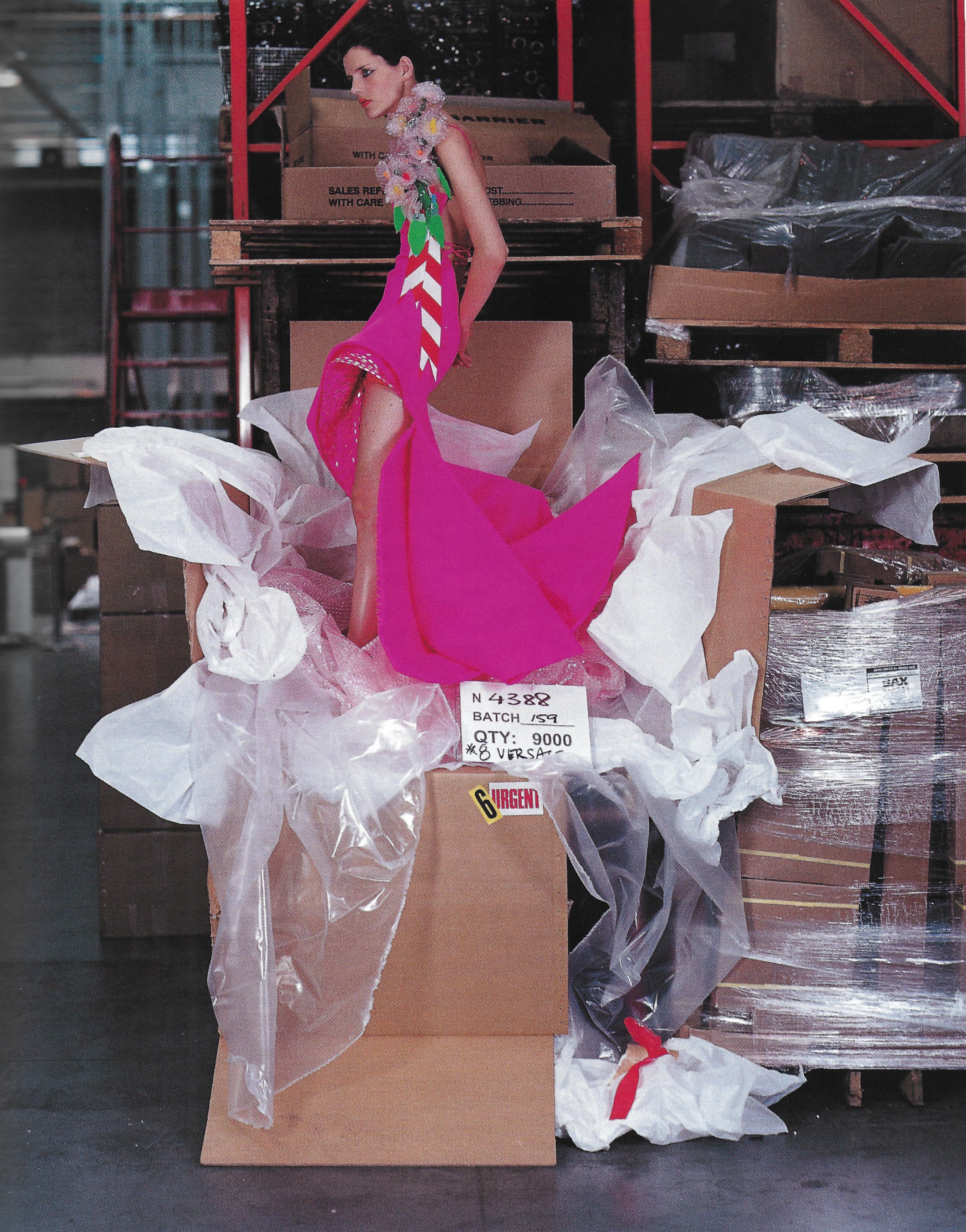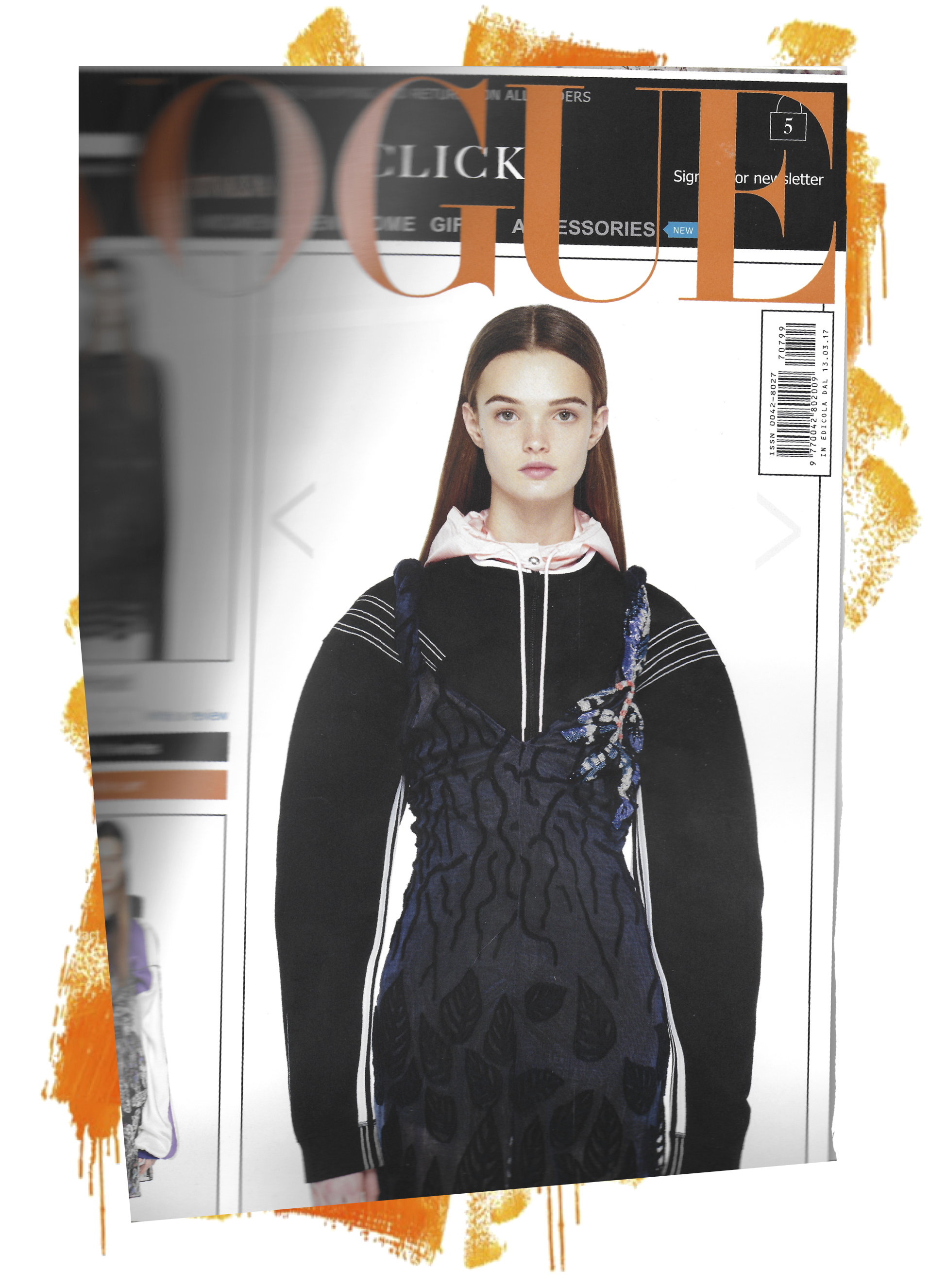Originally published June 2016 on Modern Melange
McDonaldization, the debated concept coined by George Ritzer, is defined as “the process by which the principles of the fast-food restaurant are coming to dominate more and more sectors of American society and the rest of the world” (Ritzer, 1993). Stemming from Max Weber’s concept of bureaucracy, which entailed formal rationality, delegation, and specialised roles, McDonaldization is composed by the four elements of efficiency, calculability, predictability, and control. These elements are particularly significant to the rise of “fast fashion”: a practice whereby designer fashion innovations are copied and quickly manufactured, then sold cheaply to allow the mainstream consumer to consume current clothing trends at an affordable price (Muran, 2007). Hence, these companies including Zara and H&M are compared to “U.S. based fast food chains” for satisfying their customer’s specific needs at a low price (Ghemawat & Nueno, 2006). To elaborate, McDonald’s satisfies the need for customers to refuel, opposed to having a pleasurable meal (Berger, 1983), while fast fashion satisfies the need for customers to be trendy, opposed to purchasing a high quality, original item.
The first element of McDonaldization to address these needs is efficiency. Generally, efficiency is desired, as it offers the optimum means to reach certain ends (Ritzer, 1993). It has its advantages of allowing consumers get what they want more easily and with less effort, such as online shopping, while workers can perform their tasks more rapidly, allowing organisations to reduce cost and increase revenue. The efficiency of fast-fashion is achieved through the retailers’ understanding of the target market's wants, which is a high fashion looking garment at a price at the lower end of the clothing sector (Muran, 2007).
Therefore efficiency of fast fashion can increase demanded product diversity and innovation. For example, the manufacturing efficiency of Zara generates unique products every four weeks, opposed to the traditional industry model, which involves almost 9 months of design and production (Ghemawat & Nueno, 2006). This four-week time frame, based on Quick Response Policies, corresponds with the average time between visits of the average Zara shopper, suggesting this is also efficient for the consumer (Ghemawat & Nueno, 2006). This in turn continuously supplies diversity by generating unique products, encouraging more creativity and promising an exciting consumer shopping experience with new merchandise. My opinion therefore conflicts with Ritzer who argues, “Diversity, which many people crave, is being reduced or eliminated” through McDonaldization (Ritzer, 1993) and I would concur with the judgment that “Ritzer’s prognosis is unnecessarily gloomy” (Lyon, Taylor, & Smith, 1994).
This fast-fashion focus of lowering costs and increasing speed, results with employees being "cogs in the machine" (Barker, 1993)
Unfortunately, being able to sell £5 t-shirts and produce new material once a month comes with a heavy price. In terms of production, efficiency can lead to a severe irrationality of rationality of exploiting and dehumanising workers, in order to increase speed and lower costs (Kellner, 1999). This irrationality can lead to the development of sweatshops. Here workers lose a sense of identity and perform mundane tasks, in sometimes harsh conditions, which provide no incentive apart from a minimal financial reward. This fast-fashion focus of lowering costs and increasing speed, results with employees being "cogs in the machine" (Barker, 1993). Also, because of open trade agreements to efficiently import and export goods, virtually all manufacturing can be outsourced to cheaper labor economies to gain a competitive advantage and save on cost of production (Ghemawat & Nueno, 2006).This outsourcing has lead to a reduction in employment in various countries, as half of the total productive capacity in the clothing industry has shifted from developed countries to less developed countries (Rosen, 2002).
Due to such outsourcing and a strong focus on calculability, Zara is able to manufacture 450 million items a year. They create 11,000 unique items per annum, while competitors only generate 2,000-4,000 items (Ghemawat & Nueno, 2006). This mass-production allows them to produce six seasons opposed to four, in order for it’s stores to buy merchandise in small batches and focus on a “short-cycle” time. This reduces working capital intensity, while continuously producing new merchandise (Ghemawat & Nueno, 2006).
In the UK, more than 1,000,000,000 kg of textile is sent to landfill every year (Waste Online, 2008) and is continuously rising, due to the impact of fast fashion.
While Levitt (1987) suggests, “standards are not just threatened but are sometimes actually raised by mass producers,” Ritzer argues this focus on quantity, can compromise quality. For example, Zara products are designed to be worn no more than 10 times and then disposed of (McAfee, Sjoman, & Dessain, 2004). This increased disposal is causing a tremendous impact on our environment. In the UK, more than 1,000,000,000 kg of textile is sent to landfill every year (Waste Online, 2008) and is continuously rising, due to the impact of fast fashion. These practices are not sustainable, yet cannot be blamed solely on the elements McDonaldization, but also on our general lack of knowledge of how and where clothing is disposed of, how it is made, and what the environmental consequences are (Morgan & Birtwistle 2009).
Even with such high and damaging production rates, fashion incorporates predictability. Predictability can offer peace of mind to the consumer, by being stable and trustworthy, and can allow producers to easily predict requirements and outcomes (Ritzer, 1993). For example, the inexpensive pricing strategies of many fast-fashion companies is predictable, as they target Generation Y and Z consumers who tend to have less disposable income. Also, being ‘standardized’ might even be viewed as quite beneficial,” (Lyon et al., 1994) such as fulfilling consumer expectations of a product or service. Furthermore, predictability supports consistent branding, which allows an organization to position itself effectively in the consumers mind (Aaker, 1997). Therefore, the brand is able to connote to subjective “brand personalities” such as Abercrombie and Fitch being “casually cool” through it’s predictable product design and branding. However, consistent predictability should not lead to being dull and monotonous; for people to talk about a brand, it “should be outrageous” (Mangold & Faulds, 2009) and should therefore incorporate innovative fresh approaches! Thus, the extent of predictability can vary, and should sometimes merge with the unexpected.For example, Chanel marries its predictable, elegant design with seasonal innovations to accommodate its broad range of customers and that of the evolving fashion industry. The company relies on their predictable look of tweed and pearls, yet modifies its designs to satisfy a contemporary market, such as introducing tweed sneakers. When speaking with a Chanel representative, I was told “The brand grows and transforms…but stays true to its roots” implying that predictability can in fact become a platform for innovation and originality, again challenging Ritzer’s case, that McDonaldization stifles diversity.
The products produced by such controlled mass-production can be described as being “nothing”: a social form that is generally centrally conceived, controlled and comparatively devoid of distinctive substantive content (Ritzer, 2011).
Like predictability, the extent of control can vary within an organization, although increased control and the replacement of human with non-human technologies has become particularly apparent in the fashion industry. These new technologies are created to increase productivity, quality, standardization, and to lower cost. They are argued to have greater control over people as employees and as consumers in a McDonaldized society (Ritzer, 1993). Zara has turned its strict control strategies over garment factories into their greatest competitive advantage (CNN, 2001). They are centrally run in La Coruña, Spain, and rely on worldwide orders from handheld devices, a global tracking system, barcoded hanging garments, and robotic carousels, which handle 45,000 folded garments per hour (Ghemawat & Nueno, 2006). This is a shift from human to non-human technologies, but it leads to manufacturing efficiencies, which are necessary to compete with other brands in the market and to satisfy consumer demands. The products produced by such controlled mass-production can be described as being “nothing”: a social form that is generally centrally conceived, controlled and comparatively devoid of distinctive substantive content (Ritzer, 2011).
Therefore, this productivity and cost-reduction approach is not suitable for all; low price and speed may be willingly sacrificed for a unique, individual, and quality oriented product (Teboul, 1988). This approach may focus on producing a more “something” product, which is indigenously conceived and controlled social form that is comparatively rich in distinctive substantive content (Ritzer, 2011).
The Internet has revolutionized the relationship between brand and consumer, where consumers can connect to brands wherever and whenever. Even after product purchase, customers may “remain aggressively engaged, publicly promote or attack the products they’ve bought, collaborate in the brand’s development, and challenge and shape their meaning” (Edelman, 2010). This hands power to the consumer as they have the ability to control the direction and development of a brand simply through word of mouth. This word-of-mouth marketing has become an “over-riding industry preoccupation for marketers” (Smith & Zook, 2011) and is most prevalent through social media.
Social media is the “group of Internet-based applications that build on the ideological & technological foundations of web 2.0 and that allow the creation and exchange of user generated content (UGC)” (Kaplan & Haenlein, 2009).Here consumers can find specific information and make decisions regarding a brand or product, as social media is considered more trust worthy than traditional company-sponsored elements (Mangold & Faulds, 2009). ‘Social Media is the biggest change since the industrial revolution’ (Arthur, 2011) as platforms including Facebook and Twitter are putting customers back at the center of the organization and are democratizing the phenomena of marketing (Smith & Zook, 2011). Here billions have the opportunity to share opinions, write reviews, and directly engage with an organization.
Organizations also depend on these digital platforms for communication as they can reach, engage, and widen their network of consumers, as well as conduct valuable market research. They can help customers by sharing expertise and listening to the vocal elements within a market. (Smith & Zook, 2011) This element of being able to help consumers is what Peter Drucker believes is the only reason any company exists (Smith & Zook, 2011). Moreover, brands are able to share and provide experiences through social media.
Not only does this associate to the control of non-human technologies on the consumer, (Ritzer, 1993) but this also suggests that the consumers themselves are working as marketers for the brand.
Social Media has created a “trialogue” (Earls, 2002) of interaction between the brand, consumers, and opinion leaders. This generates quicker and cheaper feedback for marketers to learn about consumers, as sometimes “the networked market knows more than companies do about their own products” (Levine et al, 2000). Also, it allows consumers to conduct information and voice complaints or praise to an organisation. The trialogue can:
Invite and allow customers as stakeholders to engage at a higher level by creating UGC or fully blown collaborative co-creation to deliver new products & solutions (Smith & Zook, 2011).
This is especially relevant to opinion leaders as they can influence the everyday consumer and generate “earned media” for companies, such as creating websites supporting a brand or product (Edelman, 2010). In fashion, bloggers have arguably become the most dominant opinion leaders. These ordinary consumers have gained mass audiences through their application of UGC and reviews, resulting in a “Megaphone Effect” through the Web (McQuarrie, Miller, & Phillips, 2013). Examples include Anna dello Russo and The Blonde Salad, who have become luxury brand evangelists and ambassadors, and strongly contribute to co-creation of value for various brands (Smith & Zook, 2011).
Smith and Zook (2011) suggest, “Social media helps to build relationships with customers and prospects listening, rather than shouting and broadcasting messages at them.” However, as many blogs have gained mass audiences, brands such as Moschino capture this opportunity and are sending merchandise to bloggers without charge to promote themselves. This contradicts the new mindset of “more listening less shouting” on social media. As bloggers promote a brand’s product, they transform from being individual opinion leaders to ‘Instagramed’ advertisements. When seeing these commercialised blog posts it makes me feel disappointed and leads me to disagree with the idea that marketing is completely democratised through social media. Opinion leaders seem to morph with an organisation, where the “trialogue” is becoming an uncomfortable dialogue between an organisation and their blogging “opinion” leader with the consumer. Additionally, unique trends and creative thought generated by these blogs are being controlled by organisations, where almost all popular bloggers are wearing the same predictable clothing.
Mobile marketing is also an element to consider when deciding if power has shifted to the consumer or remains with the organisation. Consumers can be “constantly connected using a personal mobile device”, allowing them to gather and share information instantly (Kaplan, 2011). This suggests power lies with the consumer as they can continuously shape the perception of a brand.Also they can initiate pull communications by opting to receive information by desired organisations. For example, I willingly opt to receive iPhone notifications from Vogue. This indicates I’m a patron of Vogue, as I have given permission to be contacted and have provided my own personal information (Kaplan, 2011). On the other hand, I am a victim to Vodafone, as the company has my information and sends me unwanted messages through relentless push communications (Kaplan, 2011).
These mobile relationships create huge potential for such organisations. They are able to obtain geo-demographic and behavioural statistics and have the potential to track exposure and effectiveness of their activities (Kaplan, 2011). This clearly hands back power to the organisation and reminds me of George Orwell’s 1984 with “Big Brother” watching. I think these practices are an invasion of privacy, but at this point, all of us should be aware that everything we do on our mobiles and on the Internet is not private. While our own security, privacy and trust are compromised; the efficiency of future products and services can be improved through this substantial market research, benefitting both consumer and organisation.
Ultimately, digital marketing and McDonaldization can be viewed as both a blessing and a curse. They offer the potential for individuals, organisations, and strategies in society to progress into the future, to become more efficient and more democratised. However, they also result in dramatic setbacks such as the invasion of privacy, due to mobile marketing and the dehumanization of employees, due to the obsession of reaching certain ends.
Together, they allow organisations such as Zara, “to be the most innovative, yet devastating retailer[s] in the world” (CNN, 2001).




